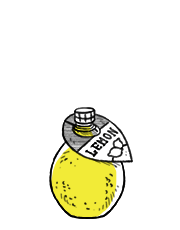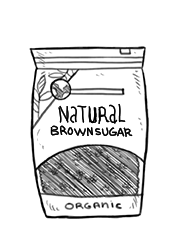chunky apple jam
2-3 230g jars — 50 minutes

Every fall we volunteer with a local organization to pick apples on private property that would normally go to waste. This year we got a lot of fruit so we decided to process some. We are not huge fans of compote, but we do like chunky-style jams.
Apples
We can't say for certain what kind of apple we picked, they looked like spartans or fujis, either way they are sweet and crisp and lend well to jams.
Botulism? In the word of Kevin West, acidity is the enemy of botulism. Foods that have a pH below 4.6, high-acid foods like apples, blueberries, strawberries (and many more) are completely safe, they have sufficient natural acidity to safeguard us against the risk of botulism. Despite this, it is still necessary to process the clean jars after filling them with jam.
Jam doneness
Apples normally have enough natural pectin to gel. Is my jam ready to take off the heat? There are three methods:
Temperature Test: Take the temperature of the jelly with a candy or jelly thermometer. When done, the temperature of the jelly should be 100°C if you are at sea level. NOTE: For each 305 m of altitude above sea level, subtract 2 degrees. For instance, at 305 m of altitude, the jelly is done at 100°C; at 610 m, 102°C, etc
Spoon or Sheet Test. Dip a cool metal spoon into the boiling jelly mixture and lift the spoon out of the steam so the syrup runs off the side. When the mixture first starts to boil, the drops will be light and syrupy. As the syrup continues to boil, the drops will become heavier and will drop off the spoon two at a time. When the two drops form together and sheet off the spoon, the jellying point has been reached.
Refrigerator/Freezer Test. Pour a small amount of boiling jelly on a plate, and put it in the freezing compartment of a refrigerator for a few minutes. If the mixture gels, it should be done. During this test, the rest of the jelly mixture should be removed from the heat [ref].
Sugar. Adding too little sugar may cause the jam to ferment. In this recipe, we added demerara sugar (it's what we had on hand) so this why the jam is dark. We like it because it has plenty of molasses in it, lending the jam a deep and pleasant toffee-esque flavor. Feel free to use other varieties of sugar, especially if you prefer a lighter-colored jam, or if you don't like the flavor of molasses.
Recommended Process Time
When processing jars in a boiler canner, the time varies depending on the altitude where you live. For this recipe (hot pack) the recommended time for those living from 0 - 305 m (0 - 1,000 ft) is 10 minutes, but the National Center for Food Preservation recommends 5 minutes, I do the longer time to avoid having to pre-boil the jars. For 305 m - 1829 m (1,001 - 6,000 ft) the time is 10 minutes, and 15 minutes for anyone above 1829 m (6,000 ft).
Sterilizing Empty Jars
It is unnecessary to presterilize jars for fruits, tomatoes, and pickled or fermented foods that will be processed 10 minutes or longer in a boiling-water canner.
 apple900 g
apple900 g lemon juice60 ml
lemon juice60 ml natural brown sugar900 g
natural brown sugar900 g cardamom4 pods, ground
cardamom4 pods, ground
jam
- Prepare clean 2-3 230 g (8 oz, 1/2 pint) glass canning jars. It not necessary to pre-sterilize the jars since they'll be processed for 10 minutes or longer in a boiling-water canner afterwards.
- Peel, and cut the apples into cubes, around 900 g (or 8 cups)'s worth. Toss the apple cubes into a bowl with 60 ml (4 tbsp) of lemon juice. Add (2 cups) of natural brown sugar (we used demerara, but feel free to use the sugar of your choice) and mix well. Cover bowl, and let the mixture sit in a cool place for a minimum of 4 hours, or overnight. This rest period will allow the liquid to be pulled from the apples, and will ensure that the apples keep their shape to get a chunky-style jam.
- There should be plenty of liquid in the bowl with the apples. Strain apples from the liquid. This is your syrup. Reserve the apples. Pour the syrup into your jam pot, and bring it to a boil. Add the cut apples to the pot, along with 4 crushed cardamom pods (optional, but delicious). Reduce heat to medium-high and cover the pot, cook for 30 minutes. Stir mixture often to prevent scorching.
- Jam will thicken, and apples will soften. After the 30 minute mark, I like to squish the apples with a potato masher a bit if they haven't softened enough. Once the mixture is thick enough, turn off heat and transfer to jam jars (see instructions in above text to see how to check for jam doneness). Leave 6 mm (1/4 in) of space at top of jar, and using the tip of a knife, or a chopstick, pop out as many air bubbles as you can.
- It's possible to refrigerate and eat the jam right away, but if you want the jar to last longer it is necessary to process the jars in a boiling water canner. To do this, bring a large pot of water to a boil, add the jam jars with enough water to cover them, and those living at 0 - 305 m (0 - 1,000 ft) ought to boil the jars for 10 minutes (see above notes for altitude adjustments). Turn the heat off, but leave the jars in the pot for an extra 5 minutes. Transfer jars to counter-top over a dishtowel, let cool. Once cooled, they're ready to store. Ideally, eat within 12 months.
